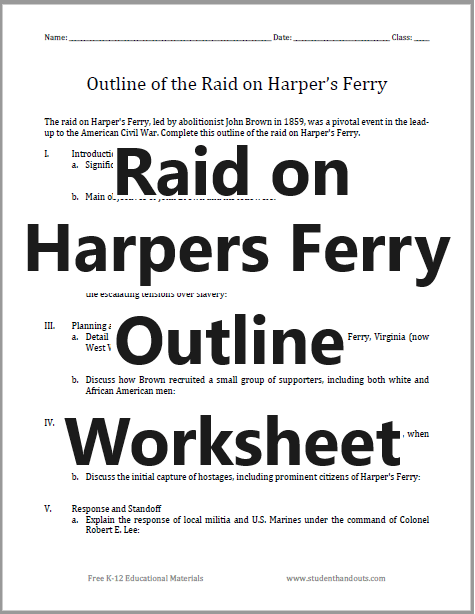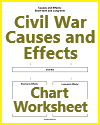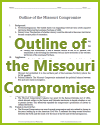Raid on Harpers Ferry Outline Worksheet |
| www.studenthandouts.com > U.S. History > National & Sectional Conflict > Outlines & PPTs |
| This outline provides a structured framework for studying the raid on Harpers Ferry and its role in the complex and contentious history of slavery and abolitionism in the United States. Completing it helps students organize information and understand the significance of this pivotal event. |
 |  |
|---|
| "The raid on Harpers Ferry, led by abolitionist John Brown in 1859, was a pivotal event in the lead-up to the American Civil War. Complete this outline of the raid on Harpers Ferry." Click here to print. Answers will vary. |
|
John Brown's raid on Harpers Ferry, which occurred in 1859, was a pivotal event in the lead-up to the American Civil War.
Background: John Brown, a fervent abolitionist, had long advocated for the use of armed force to end slavery in the United States. He believed in the righteousness of his cause and was willing to take extreme measures to achieve it. Brown was particularly influenced by the violence in "Bleeding Kansas," where pro-slavery and anti-slavery settlers clashed in the 1850s. Planning and Preparation: Brown meticulously planned the raid on the federal arsenal at Harpers Ferry, Virginia (now West Virginia). He believed that capturing weapons there would provide a catalyst for a widespread slave rebellion. Brown assembled a small band of followers, including his sons and other like-minded individuals, both white and African American. They trained for the raid in secret locations in Maryland. The Raid: On the night of October 16, 1859, Brown and his men, numbering 21 in total, launched their attack on Harpers Ferry. They cut telegraph wires, disabled trains, and captured prominent citizens to prevent an immediate response. Brown's men took control of the federal armory and arsenal, seizing weapons and ammunition. Brown had hoped that enslaved people in the area would rally to his cause, but this did not happen as he had anticipated. Standoff and Response: Word of the raid reached local authorities and the U.S. government, prompting a response. Local militias and U.S. Marines, led by Colonel Robert E. Lee and Lieutenant J.E.B. Stuart, surrounded the armory, trapping Brown and his men inside. The standoff lasted for two days, during which time Brown and his men fortified themselves in the armory's fire engine house, later known as John Brown's Fort. End of the Raid: On the morning of October 18, 1859, U.S. Marines stormed the engine house. After a brief but intense battle, they captured Brown and the surviving raiders. Several of Brown's men were killed during the assault, including two of his sons. Brown himself was seriously wounded and subsequently taken into custody. Aftermath: John Brown and his surviving followers were put on trial for their actions. Brown's trial and subsequent execution attracted significant attention and further polarized the nation. In the North, Brown was hailed as a martyr and hero by some abolitionists, while in the South, he was vilified as a dangerous fanatic. The raid on Harpers Ferry heightened tensions between the North and the South, bringing the nation one step closer to the outbreak of the Civil War. Legacy: John Brown's raid on Harpers Ferry is often seen as a precursor to the Civil War. It highlighted the deep divisions over slavery and the lengths to which some individuals were willing to go to end the institution. Brown's actions had a profound impact on the nation's consciousness and played a role in the radicalization of anti-slavery sentiment. John Brown's raid on Harpers Ferry remains a complex and controversial episode in American history, embodying the moral and political turmoil of the pre-Civil War era. |
| www.studenthandouts.com > U.S. History > National & Sectional Conflict > Outlines & PPTs |









